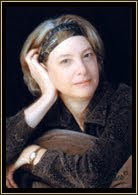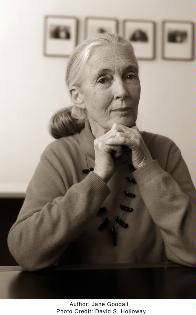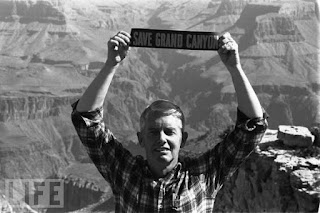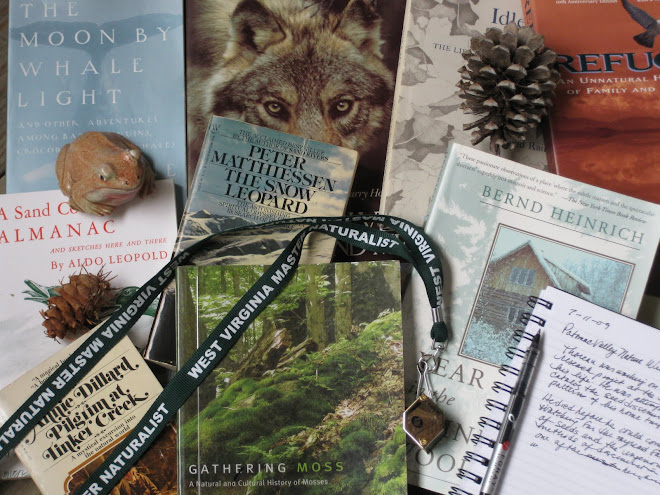Fortunately, nowadays one does not have to "live alone" with awareness of ecological wounds as Aldo Leopold felt he must in the early decades of the last century. Thanks in great part to Leopold's work at consciousness raising , ecological literacy is rapidly becoming a foundation of human society.
As one small example: our group met on

January 9 to honor Leopold and discuss his ideas. A gusty wind iced our fingers and toes, but we took comfort that the pale sun rose a little earlier than the day before, and would set a little later. Member Marilee welcomed us to her cozy home, and we settled in with cups of hot tea and delicacies.
We got right to work on a major task--choosing our authors and works for 2011. We have an exciting reading list lined up! (See left.) Unfortunately we became so absorbed in discussing the candidates and related topics that we left only a short time to devote to Leopold's
A Sand County Almanac! But here's the gist of what we shared (if anyone remembers something that I missed or wants to contribute a new thought, please email
pvnaturewriters@gmail.com or add your comment to this blog posting):
1. Aldo Leopold was an artist-philosopher-scientist. Almost a priest of Gaia. His writing integrates facts with a deep wisdom, a keen intellect, a cautionary prescription, his own emotional and spiritual responses to nature, and his simple enjoyment of living. Each word is perfectly chosen and combined with its fellows. So much meaning is packed into each sentence, but they all seem to flow effortlessly. His descriptions of nature are vivid, sensory experiences. Some members had lengthy handwritten notes or had flagged multiple pages in their copies of the book, to mark their favorites of his ideas and artistic turns of phrase. Members quoted from his writing to emphasize their points.
2. His ideas were groundbreaking but they seem almost commonplace now because so much of what we (meaing the conservation community) read and practice is permeated with his understanding of how humans are members of a biotic community and how our actions need to reflect this basic ecology. But he was one of the first to think this through and express it! Putting his work into the context of his time creates awe for his achievement. He predated Rachel Carson's
Silent Spring!
3. As one feels/thinks, so one acts. Our environmental crisis is directly related to how we think, feel and perceive nature.
There are some who can live without wild things, and some who cannot....4. Leopold pointed out how access to nature was historically a CLASS issue, for example, private game clubs. Without governments and others working to preserve parks and lands accessible to all ( i.e. our rightful heritage), likely only the elite would be able to enjoy natural beauty and the full benefits of a working ecosystem.
5. Hunters can be conservationists, and historically some of our foremost conservationists, like Teddy Roosevelt, came from their ranks. Leopold writes of his hunting experiences as a form of communion with and reverence for the land, and decries hunters whose primary motivation is the trophy.
6. Leopold inspired members to pull out their field guides to check his references to plant species. Two members brought supplemental books written by or about Leopold to share.
7. Question: does Leopold's writing promote an impractical ideal? Not sure. Certainly a guiding principle to work toward.
8. Leopold was fortunate to own land where he and his family could visit and experience it through the seasons. He got to have an ongoing intimacy that deepened over time, with a particular place. We can all do that wherever we live, if we make the effort.
9. Leopold's son was named Luna. That was pretty radical for the time. Still is, come to think of it. Another clue to his "out of the box" nature?
10. Leopold had a wry sense of humor. He comes across as approachable and easy going. He was able to write of serious issues and even admonish us in a way that does not seem strident or accusing, but inspiring
11. Leopold was a proponent of Deep Ecology, before that term was invented, that is the idea that all facets of nature have a right to exist beyond their utility to humans.
 As our globe warms, the Arctic as we once knew it is fast becoming a dream of time past. This month I'm thrilled to announce that we delve into Arctic Dreams as delivered by the prolific and much honored author Barry Lopez. Arctic Dreams won the 1986 National Book Award and is considered his masterpiece.
As our globe warms, the Arctic as we once knew it is fast becoming a dream of time past. This month I'm thrilled to announce that we delve into Arctic Dreams as delivered by the prolific and much honored author Barry Lopez. Arctic Dreams won the 1986 National Book Award and is considered his masterpiece.







 On his website there are links to his photos of moths and amphibians, and information about his other books.
On his website there are links to his photos of moths and amphibians, and information about his other books.







